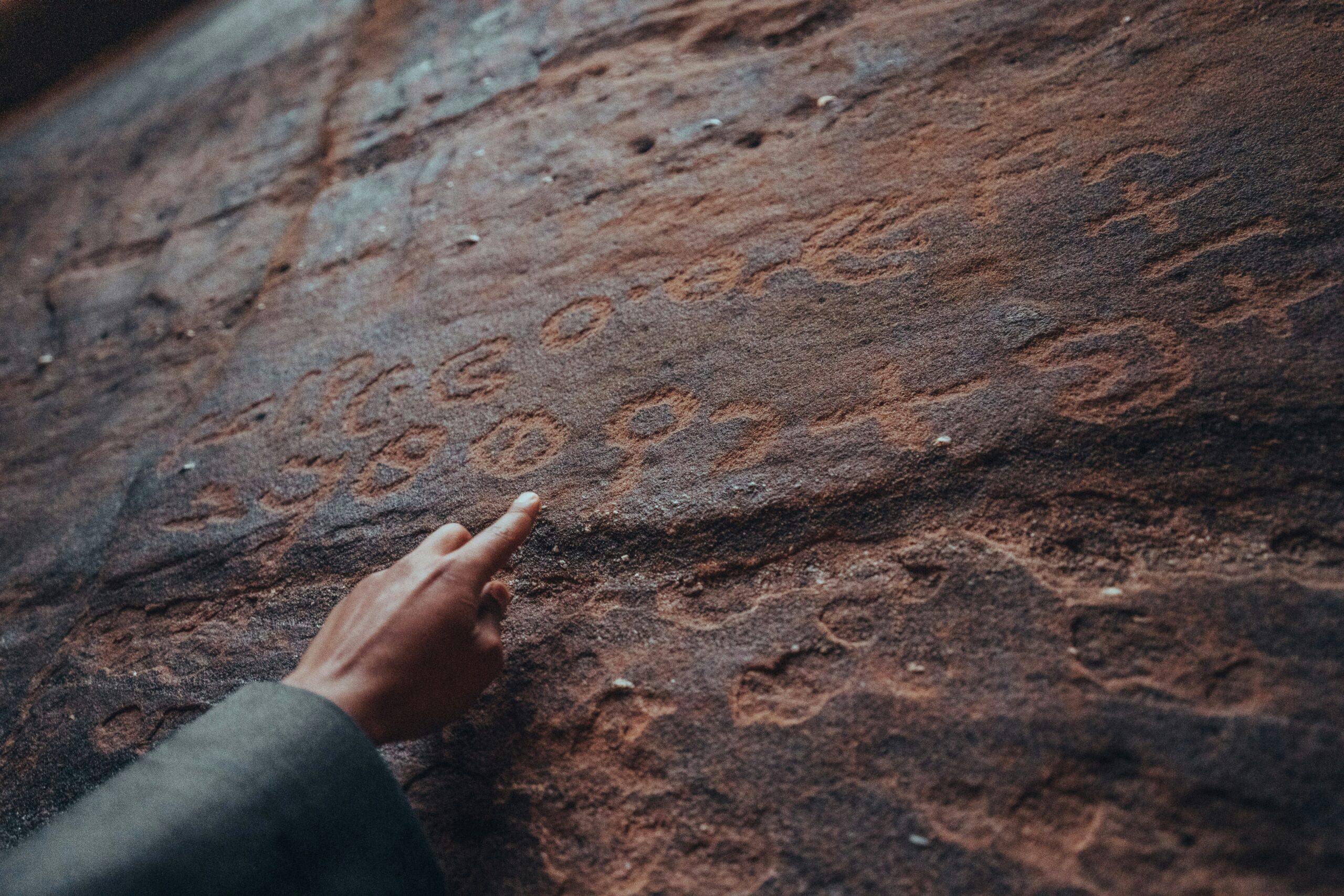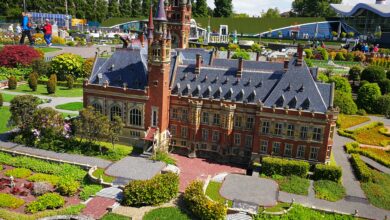🚶♂️🏰 A Walk through History: Edinburgh, Scotland 🏴
Exploring the Rich Heritage of Scotland's Capital City

Introduction
Join us on a captivating journey through time as we explore the cobblestone streets and majestic landmarks of Edinburgh, Scotland. A city renowned for its rich history and cultural heritage, Edinburgh beckons visitors to unravel the tales woven into its ancient stones. From the grandeur of Edinburgh Castle to the quaint allure of the Royal Mile, each step in this historical city unveils layers of stories waiting to be discovered.
Edinburgh Castle: Sentinel of Centuries
Perched atop an extinct volcanic rock, Edinburgh Castle commands the Scottish capital’s skyline with an imposing presence that spans centuries of history. This iconic fortress stands as a testament to Scotland’s rich and tumultuous past, offering a glimpse into its storied heritage.
Key Features and Treasures
Among its myriad attractions, Edinburgh Castle houses the illustrious Crown Jewels of Scotland. These priceless symbols of monarchy, including the Crown, Scepter, and Sword of State, gleam within the castle’s confines, drawing visitors into the regal history of the nation.
Another prized possession safeguarded within these ancient walls is the Stone of Destiny, also known as the Stone of Scone. This ancient relic played a pivotal role in Scottish coronations for centuries before being relocated to Westminster Abbey. Its return to Scotland in 1996 solidified the castle’s significance as a custodian of Scottish identity.
Role in Scottish History and Contemporary Importance
Edinburgh Castle has stood witness to pivotal moments in Scotland’s history. From royal births and coronations to sieges and conflicts, the fortress echoes the resilience of the Scottish people. It served as both a royal residence and a military stronghold, playing a crucial role in shaping the nation’s destiny.
Today, the castle stands not merely as a historical relic but as a vibrant hub of cultural significance. Its allure extends beyond history buffs, attracting tourists worldwide with its immersive exhibitions, stirring tales of valor, and panoramic views of the city. The castle also hosts various events, including the world-renowned Edinburgh Military Tattoo, captivating audiences with its grandeur and pageantry.
Edinburgh Castle’s towering presence embodies the spirit of Scotland—its resilience, pride, and heritage. Its walls resonate with stories of valor and intrigue, inviting visitors to immerse themselves in a living tapestry of Scottish history while standing as a beacon of the nation’s identity.

Royal Mile: Pathway Through the Ages
The Royal Mile stands as Edinburgh’s iconic thoroughfare, spanning approximately one Scots mile (about 1.12 standard miles) and serving as a historic link between the Edinburgh Castle perched atop Castle Rock and the grandeur of the Holyrood Palace. This storied street is not merely a stretch of cobblestones but a passage through time, preserving centuries of history within its atmospheric confines.
Notable Landmarks Along the Mile
As one traverses the Royal Mile, a tapestry of significant landmarks unfolds. St. Giles’ Cathedral, a magnificent Gothic structure, stands as a focal point along this historic path. Its intricate stonework and majestic spire draw the eye, inviting visitors to explore its rich history and stunning architecture. The cathedral, often referred to as the “Mother Church of Presbyterianism,” is an architectural marvel that encapsulates the essence of Scottish religious history.
Moreover, other notable sites, including the imposing silhouette of the Edinburgh Castle at the mile’s pinnacle, the captivating Scottish Parliament Building, and the historically-rich John Knox House, offer glimpses into different eras, each contributing to the Royal Mile’s allure.
Historical Significance and Preserved Architecture
The Royal Mile pulsates with historical significance, echoing with tales of royalty, clashes, and cultural evolution. Its well-preserved architecture showcases a captivating blend of medieval, Renaissance, and Georgian styles. The tightly packed tenements, narrow closes (alleyways), and hidden courtyards interspersed with grand edifices narrate Edinburgh’s evolution across centuries.
Moreover, the street’s atmospheric charm owes much to its conservation efforts, meticulously preserving its historical buildings and layout. The narrow wynds and tall tenements maintain the ambiance of a bygone era, offering visitors a tangible connection to Edinburgh’s rich past.
The Royal Mile isn’t just a tourist route; it’s a living monument, where every cobblestone carries the weight of history, inviting visitors to immerse themselves in the narrative of Edinburgh’s evolution. Its significance as a UNESCO World Heritage Site solidifies its place as an irreplaceable repository of Scotland’s cultural heritage.
Holyrood Palace: Residence Fit for Royalty
Overview of Holyrood Palace
Nestled at the end of Edinburgh’s Royal Mile, Holyrood Palace stands as an iconic symbol of regal elegance and historical significance. As the official residence of the monarch in Scotland, this palace exudes grandeur and heritage. Its rich history, stunning architecture, immaculate gardens, and royal connections weave a captivating narrative.
Description of Architecture, Gardens, and Historical Importance
Holyrood Palace’s architecture blends various styles across centuries. The structure boasts a striking facade adorned with turrets, towers, and intricate details, reflecting influences from Gothic to Baroque periods. The palace’s interior dazzles with opulent chambers, including the Great Gallery and the Throne Room, adorned with ornate ceilings and priceless artworks.
The palace is not just a monument of architectural splendor but also home to immaculate gardens. The Palace Gardens, a serene oasis, offer a tranquil retreat from the bustling city. Visitors wander through meticulously manicured lawns, vibrant flower beds, and historic ruins, soaking in the serene ambiance intertwined with centuries of history.
Royal Connections and Significant Events
Holyrood Palace’s storied halls have witnessed a myriad of royal connections and significant events. It served as the setting for historic royal ceremonies, including coronations and royal receptions. The palace resonates with tales of intrigue, including the dramatic murder of David Rizzio, private secretary to Mary, Queen of Scots, adding an air of mystery to its corridors.
Throughout the centuries, Holyrood has been a hub of cultural gatherings, hosting illustrious figures and events that shaped Scotland’s history. From welcoming foreign dignitaries to being the backdrop for cultural celebrations and official state functions, the palace stands as a living testament to Scotland’s past and its enduring ties to the monarchy.
Holyrood Palace remains not just a residence but a living heritage site, inviting visitors to delve into the rich tapestry of Scotland’s royal history while basking in the opulence and grace of this esteemed royal abode.
Unveiling the History of The Real Mary King’s Close
Beneath the bustling streets of Edinburgh lies a hidden gem of history, The Real Mary King’s Close. This underground close offers a fascinating glimpse into the city’s past, transporting visitors back in time to uncover stories and secrets from centuries ago.
Preserved Streets, Houses, and Stories
Walking through The Real Mary King’s Close is like stepping into a time capsule. Preserved streets and houses, frozen in time, reveal the daily lives of Edinburgh’s residents from the 17th century. The close, once a bustling marketplace, now echoes with tales of merchants, tradespeople, and ordinary folk who called these narrow streets home.
The houses, with their recreated interiors, vividly illustrate the living conditions and social dynamics of the time. Each room tells a unique story, offering insights into the challenges, superstitions, and daily routines of the past. Visitors can explore rooms where families lived and hear anecdotes of life in the close, creating a tangible connection to Edinburgh’s bygone era.
Immersive Experience and Insights
What sets The Real Mary King’s Close apart is its immersive storytelling. Guides, dressed in period costumes, skillfully narrate tales of plague, poverty, and resilience, breathing life into the historic close. Visitors are encouraged to engage, ask questions, and participate in the interactive experience, making history come alive.
The close’s eerie atmosphere adds depth to the stories, creating a sense of intrigue and fascination. As visitors navigate the underground passages and chambers, they gain profound insights into the hardships faced by the inhabitants, fostering a deeper understanding of Edinburgh’s rich and complex history.
Exploring The Real Mary King’s Close isn’t just a tour; it’s an educational journey that leaves a lasting impression. Visitors emerge with a newfound appreciation for the city’s heritage, having unearthed a wealth of knowledge about the lives lived in this hidden enclave beneath Edinburgh’s streets.
FAQs
Q. Is Edinburgh Castle open to visitors year-round?
A. Edinburgh Castle welcomes visitors year-round, offering a glimpse into Scotland’s history and hosting various events.
Q. What’s the significance of the Royal Mile?
A. The Royal Mile encapsulates Edinburgh’s rich heritage, lined with historic buildings, museums, and vibrant festivals.
Q. How do I explore Edinburgh’s literary history?
A. Guided tours and self-guided walks allow exploration of Edinburgh’s literary heritage, from author-inspired spots to literary festivals.
Q. Are there admission fees for visiting these historical sites?
A. Admission fees vary for different sites. Some offer free entry while others require tickets for exploration.
Q. Can I take photographs in these historical locations?
A. Most sites allow photography; however, some sites might have restrictions. Always check the regulations beforehand.
Q. What are the best times to visit these historical landmarks?
A. Spring and summer witness a surge in visitors due to milder weather, but Edinburgh’s historical charm captivates all year round.
Conclusion
As our stroll through Edinburgh’s historical tapestry comes to an end, the echoes of the past linger in the streets and monuments of this remarkable city. Edinburgh, with its castles, palaces, and hidden closes, stands as a testament to Scotland’s vibrant history. Each site visited, from the towering castle walls to the winding streets, offers a glimpse into the lives and events that shaped the city’s narrative. May this exploration inspire a deeper appreciation for Edinburgh’s rich history and ignite a desire to continue unraveling the stories embedded in its ancient walls.
UP NEXT
https://touristeyes.com/lake-como-tourist-guide-and-best-places-to-visit/





Facebook Comments